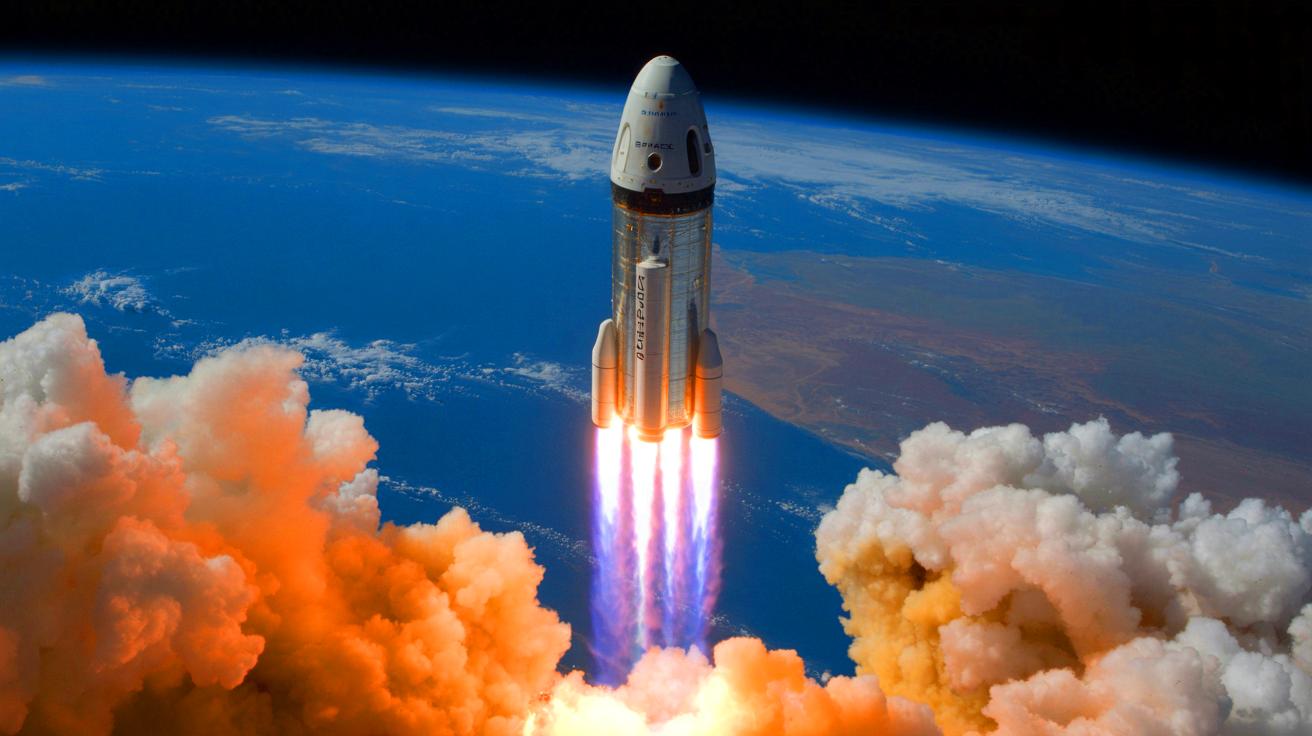- 🚀 SpaceX’s Dragon capsule returned with 6,700 pounds of advanced equipment from the ISS.
- 🔬 The MISSE-20 project tested material durability in space for future spacecraft design.
- 🤖 The Astrobee-REACCH system showcased robotic advancements for satellite servicing and debris management.
- 📚 The Story Time from Space project inspired young minds with STEM-themed books and science demonstrations.
SpaceX’s recent mission marked a significant milestone in space exploration, as the Dragon capsule returned to Earth with 6,700 pounds of advanced equipment. This mission underscores the evolving role of commercial spaceflight in conjunction with NASA, highlighting the potential for innovative technologies to reshape our understanding of space. The gear brought back by the Dragon capsule is poised to influence spacecraft design, satellite servicing, and education. This article delves into these groundbreaking innovations, examining their potential to transform our approach to space exploration, protection, and education.
Durability Testing for Future Spacecraft
Among the key experiments aboard the Dragon capsule was the Multipurpose International Space Station Experiment, or MISSE-20. This project focused on assessing the durability of various materials exposed to the harsh environment of space. Scientists selected a range of materials, including radiation shielding, solar sail coatings, ceramic composites, and specialty resins, to test their resilience against extreme conditions such as ultraviolet radiation, atomic oxygen, and drastic temperature fluctuations.
The findings from MISSE-20 hold significant implications for future spacecraft design. By understanding how these materials degrade in space, researchers can develop more advanced heat shields and robust outer hulls. This knowledge is essential for ensuring the longevity and safety of spacecraft as they venture into deep space. The insights gained from this project could shape the construction of future missions, safeguarding both equipment and crew.
Innovations in Robotic Technology
The Dragon capsule also returned with the Astrobee-REACCH robotic system, showcasing the potential of advanced robotics in space operations. This system integrated NASA’s Astrobee free-flying robots with tentacle-like arms equipped with adhesive pads, allowing them to adeptly grasp and maneuver objects of various shapes and textures in microgravity.
The potential applications of this technology are vast. From servicing satellites to removing orbital debris and repositioning objects in space, such robots could play a critical role in extending the lifespan of satellites and enhancing the safety of spacecraft in low Earth orbit. As space technology continues to evolve, innovations like Astrobee-REACCH are crucial for maintaining and optimizing assets, contributing to a safer and more efficient space environment.
Advancements in Space Imaging
The Dragon capsule’s return also included hardware from the OPTICA experiment, which focused on Onboard Programmable Technology for Image Compression and Analysis. This project tested the compression and real-time transmission of hyperspectral imagery, aiming to reduce the bandwidth needed for sending detailed space images.
OPTICA’s success has significant implications for various fields, including disaster response, agriculture, and environmental monitoring. By cutting costs and enhancing the efficiency of space-based imaging systems, this technology has the potential to revolutionize how we gather and utilize data from space to tackle real-world challenges. Such advancements in imaging technology could profoundly impact our ability to monitor and respond to global issues effectively.
Educating the Next Generation
Beyond technological advancements, the Dragon capsule brought back a collection of children’s books from the Story Time from Space project. During their time on the ISS, crew members read STEM-themed books and conducted science demonstrations, which were then shared with classrooms on Earth.
The Story Time from Space initiative aims to inspire young minds and ignite an interest in space science. By bringing these stories into classrooms worldwide, the project helps bridge the gap between Earth and space, nurturing a new generation of explorers and scientists eager to unravel the mysteries of the universe. This educational effort is pivotal in fostering future leaders in space exploration and scientific discovery.
As we reflect on the Dragon capsule’s successful mission, it’s clear that the International Space Station continues to serve as a vital testing ground for innovations that can transform life on Earth and propel humanity further into the cosmos. Each mission offers a unique blend of scientific inquiry and technological advancement, bringing us closer to realizing our ambitions of reaching the Moon, Mars, and beyond. What groundbreaking discoveries and technologies will the next mission unveil, and how will they continue to shape our future in space exploration?
This article is based on verified sources and supported by editorial technologies.
Did you like it? 4.4/5 (21)
